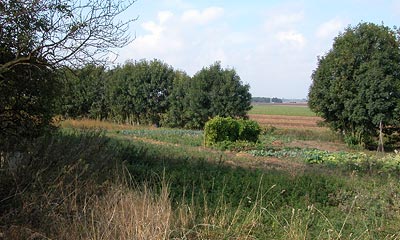Planning Policy Guidance 2: Green Belt Land
The first official proposal "to provide a reserve supply of public open spaces and of recreational areas and to establish a green belt or girdle of open space" was made by the Greater London Regional Planning Committee in 1935.
New provisions for compensation in the 1947 Town and Country Planning Act allowed local authorities to incorporate green belt proposals in their first development plans. The codification of Green Belt policy and its extension to areas other than London came in 1955 with an historic circular inviting local planning authorities to consider the establishment of Green Belts.

Extent
The Green Belts approved through structure plans now cover approximately 1,556,000 hectares, about 12 per cent of England. There are 14 separate Green Belts, varying in size from 486,000 hectares around London to just 700 hectares at Burton-on-Trent.
Purposes of including land in Green Belts
There are five purposes of including land in Green Belts:
- To check the unrestricted sprawl of large built-up areas;
- To prevent neighbouring towns from merging into one another;
- To assist in safeguarding the countryside from encroachment;
- To preserve the setting and special character of historic towns; and
- To assist in urban regeneration, by encouraging the recycling of derelict and other urban land.
Defining boundaries
Where existing local plans are being revised and updated, existing Green Belt land boundaries should not be changed unless alterations to the structure plan have been approved, or other exceptional circumstances exist, which necessitate such revision.
Where detailed Green Belt land boundaries have not yet been defined, it is necessary to establish boundaries that will endure. They should be carefully drawn so as not to include land which it is unnecessary to keep permanently open. Otherwise there is a risk that encroachment on the Green Belt may have to be allowed in order to accommodate future development. If boundaries are drawn excessively tightly around existing built-up areas it may not be possible to maintain the degree of permanence that Green Belts should have. This would devalue the concept of the Green Belt and reduce the value of local plans in making proper provision for necessary development in the future.
Wherever practicable a Green Belt should be several miles wide, so as to ensure an appreciable open zone all round the built-up area concerned. Boundaries should be clearly defined, using readily recognisable features such as roads, streams, belts of trees or woodland edges where possible.
When drawing Green Belt boundaries in development plans local planning authorities should take account of the need to promote sustainable patterns of development. They should consider the consequences for sustainable development (for example in terms of the effects on car travel) of channelling development towards urban areas inside the inner Green Belt land boundary, towards towns and villages inset within the Green Belt, or towards locations beyond the outer Green Belt boundary.
Infilling
Limited infilling at major developed sites in continuing use may help to secure jobs and prosperity without further prejudicing Green Belt land. Where this is so, local planning authorities may in their development plans identify the site, defining the boundary of the present extent of development and setting out a policy for limited infilling for the continuing use within this boundary. Such infilling should:
- (a) have no greater impact on the purposes of including land in the Green Belt than the existing development;
- (b) not exceed the height of the existing buildings; and
- (c) not lead to a major increase in the developed proportion of the site.
« Previous Article - Next Article »
Nov 2004
